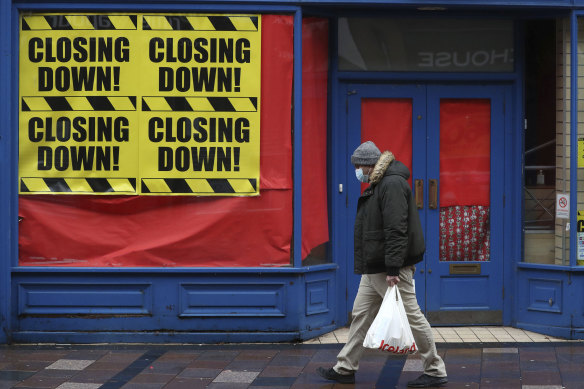Business collapses are expected to nearly double next year as experts predict that mounting costs and climbing interest rates combined with a significant slowdown in consumer spending and a more aggressive tax office will push businesses over the edge.
Insolvency and company restructuring specialists are bracing for bigger workloads, with businesses poised to bear the brunt of a stinging financial hangover predicted to hit in the early months of 2023 as the end-of-year festivities give way to the stark reality of higher mortgage repayments and lower disposable income.

Amid expectations the economy will slow significantly next year, insolvency practices will only get busier.Credit:Andrew Milligan via AP
“We are starting to see this already. We’re expecting there to be more activity off a low base,” advisory and restructuring firm McGrathNicol chairman Jason Preston told this masthead, pointing to construction, manufacturing, and discretionary retail as sectors particularly under pressure.
Construction and manufacturing companies are vulnerable as they often have fixed contracts that do not allow them to pass on higher input costs such as pricier building materials, heftier energy bills, higher labour costs or volatility in foreign currency exchange. Perth-based construction company Clough collapsed into administration earlier this week, threatening greater cost blowouts to major infrastructure projects including Snowy Hydro 2.0. In February, construction firm Probuild’s parent company abruptly pulled its financial support for the Australian business, and it entered administration.
During the COVID pandemic, insolvency figures dropped to very low levels – about 4000-6000 compared to 10,000-12,000 in a typical year – as companies were propped up by government stimulus like JobKeeper and by a supportive banking sector. Near-zero interest rates also meant businesses didn’t have to generate as much cash flow to service debts that the Australian Taxation Office was more lenient about chasing.
Loading
“That’s all changing now,” Preston said. Interest rates are now at 10-year highs after the Reserve Bank on Tuesday lifted rates for the eighth consecutive month to 3.1 per cent.
“The harder thing to predict is: is that just a gradual normalisation, and just reflecting the first economic slowdown that we’ve seen really in 12, 13 years?”
“Or, the bigger risk – and this is an unknown at the moment – will we see a real decline in liquidity like we did in 2008 that actually starts to impact businesses that weren’t particularly stressed but find themselves in a position where it’s difficult to refinance?”
For all the latest Business News Click Here
For the latest news and updates, follow us on Google News.
